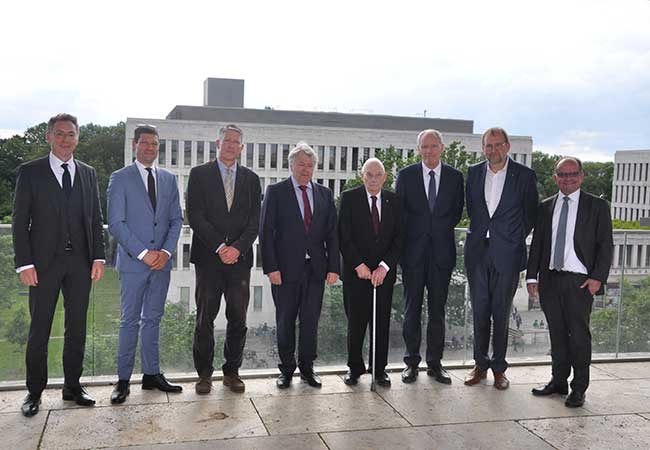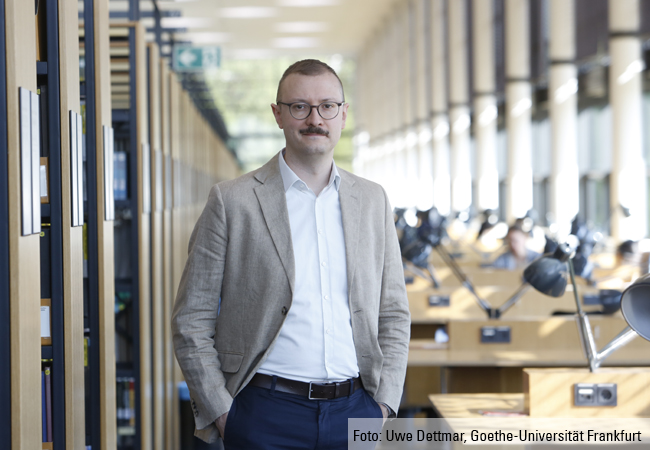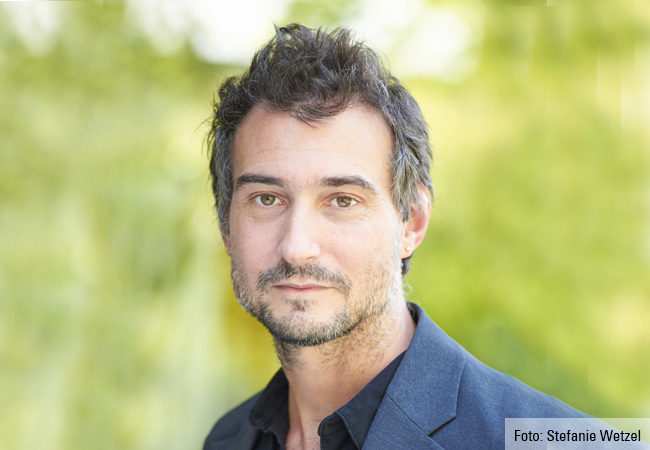The KviAPol research project deals with “Police Use of Excessive Force”.
UniReport: Ms. Abdul-Rahman, Professor Singelnstein, the Black Lives Matter movement in the US in particular likely roused people throughout the world and fueled the discussion about police violence, especially against minorities. Did such debates also play a role when you designed your study?
Laila Abdul-Rahman: Although they did not necessarily influence the design, of course we included the social debates and the questions resulting from them in our analyses. As such, we decided to take a special look at racism and experiences of discrimination within the context of the use of force by the police in a second interim report. The topic also remains pertinent in the final report.
In your preliminary considerations regarding the project, did the question also arise of whether such a study could possibly also fuel false accusations against the police and, in conjunction with this, cause some social groups to distance themselves even further from the state?
Tobias Singelnstein: The aim of our study is not to accuse anyone but instead to gain insights into a phenomenon for which, so far, almost no empirical data exist here in Germany. If state institutions ignore such issues, even though they are tremendously important for those affected and for society as a whole, this is likely to result in even further alienation. Our task as scientists is to create a nuanced basis for discussion.
With regard to methodology, you decided to highlight the perspective of those affected. How did you proceed from here?
Laila Abdul-Rahman: We conducted an online survey of more than 3,300 people, whom we had previously recruited via ‘gatekeepers’, that is, primarily from civil society organizations and counselling centers. We also issued a public call asking people to tell us about corresponding incidents. In addition, we conducted 63 qualitative interviews with representatives from the police, judiciary and civil society.
As far as different encounters with police violence are concerned, three subgroups emerged: demonstrations/political activism, soccer matches/other mass events, as well as other police operations not connected to mass events. How do these types of encounters compare?
Laila Abdul-Rahman: A large number of people is usually present at mass events such as demonstrations or soccer matches and contact between the police and those affected is often more anonymous. In addition, it is mainly special units, such as the riot police, which are deployed alongside other resources such as water cannons. This leads to certain dynamics impacting the interaction between the parties involved, such as situations quickly escalating from the perspective of those affected, sometimes without warning. Since they themselves had behaved peacefully, many respondents felt wrongly subjected to police violence. Lack of communication plays a key role here. Communication is also important when it comes to police operations outside mass events, such as ID or vehicle spot checks, or situations where the police were called because of a dispute or an offence. In these cases, it took longer for the situation to escalate, and those affected had more room for discussion, for example. Questioning the police’s prerogative to interpret events can lead to violence, or it can be triggered by actions that are in principle not prohibited, such as filming police operations.
Which types of excessive force can be distinguished? How often were criminal proceedings initiated?
Tobias Singelnstein: Our research reveals a wide range of different incidents, which also differ in terms of the types of violence: many reported that they were pushed or hit; other frequent mentions included kicking and the use of handcuffs or other restraints. 19 percent of respondents reported serious injuries such as broken bones, head injuries and internal injuries. To the knowledge of those affected, criminal proceedings were initiated in just 13 percent of the reported cases, most of which were dropped by the public prosecutor. Official statistics show that, at 2 percent, the prosecution rate is extremely low. This lays bare a problem when it comes to legal processing.
Do studies already exist that – by contrast – look at the police officer’s point of view? Could such studies be considered problematic under certain circumstances because they reflect too much the authorities’ desired view of reality?
Tobias Singelnstein: There are many studies that investigate violence against police officers, for example. In addition, several ethnographic studies exist that shed light on everyday police work. Although such studies are important, like any scientific research they are subject to certain limitations. That is why it is important also to focus on the perspective of those affected, as we have done.
You interviewed people affected, who presented their subjective view of things. In the interim report, you write, among others, that “the distinction between the lawful use of direct force by the police and the unlawful use of police violence is not always clear to legal laypeople”. Does this mean that the violence exercised by police officers that those affected considered unlawful might sometimes in fact have been lawful?
Tobias Singelnstein: As social scientists, we cannot scrutinize the cases described to us from a legal perspective in our study. We can, however, explore the reasons why police violence is perceived as unlawful by those affected. Viewed in combination with the interviews, including those with police officers, we can determine why situations escalate and which institutional problems emerge. This was our focus. It is not possible to arrive at a conclusive legal appraisal through a victimization survey.
In another analysis, the data from the KviAPol project were evaluated both qualitatively and quantitatively in terms of the experiences made by persons with a migrant background and people of color (PoC) in the context of the use of force by the police. How would you summarize those results?
Laila Abdul-Rahman: PoC reported experiencing discrimination far more often than white people did. They also suffered greater psychological impacts. In addition, PoC were more often advised not to lodge a complaint against the police officers. The interviews with police officers relayed an experiential knowledge, which in some cases was problematic, reflecting culturalizing stereotypes and other racist prejudices. The officers were not always aware of this, which indicates that racism in the police is not just an individual but at least as much a structural problem.
In this context, how do the experiences of people with a migrant background and PoC differ from those of people without a migrant background or white people? Does your study corroborate the general accusation that people are stopped for checks because of their skin color more often, regardless of whether there is cause for suspicion or not?
Tobias Singelnstein: Proportionally, it was PoC in particular who were more frequently in contact with the police during ID checks than white persons. However, because we do not have a sample that is representative of the entire population, it is not possible to generalize this result for Germany. There is still a lack of corresponding research and suitable statistical records in this field.
Interviewer: Dirk Frank
The KviAPol research project (Police Use of Excessive Force) uses a quantitative online survey to examine the use of force by the police considered unlawful from the perspective of those affected, as well as qualitative interviews to assess the police’s, the judiciary’s and civil society’s perspective on unlawful police violence in Germany and how it is handled. The team includes project leader Professor Tobias Singelnstein and research assistants Laila Abdul-Rahman, Hannah Espín Grau and Luise Klaus.
More information on the research project www.jura.uni-frankfurt.de














